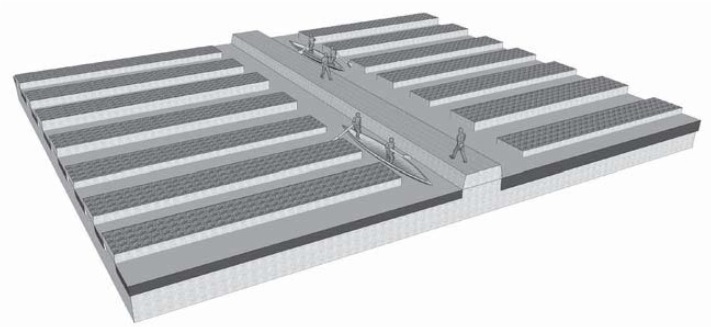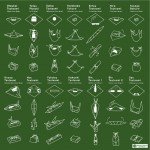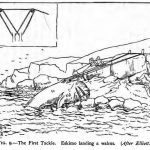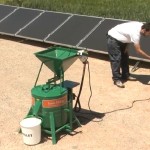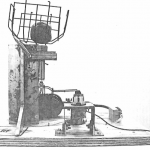Mountains of food scraps end up in landfills every day. While northern countries glorify attempts to facilitate this trash-to-treasure process using state-of-the-art technologies, Bobbili, a town in Northeast India, adopts a tech-free solution – a park using animals for solid waste management.
Animals as the Answer to Recycling Food waste
Lost Crops of Africa
“Like Asia and the Americas, the continent of Africa is blessed with a rich tropical flora. Many of the 50,000 or so plants that evolved within its forests and savannas ripen fruits to tempt the myriad wild creatures into spreading their seeds. Speaking generally, Africa has as many of these tasty morsels as tropical Asia or America.
This fact, however, is something one would never guess by looking in produce markets or college textbooks. Today, American and Asian species dominate tropical fruit production worldwide, including within Africa itself.
For this, there is good reason. Africa’s fruits have not, by and large, been brought up to their potential in terms of quality, production, and availability. Geographically speaking, few have moved beyond Africa’s shores; horticulturally speaking, most remain poorly known. Thus, the vast continental landmass lying between Mauritania and Mauritius contains a cornucopia of horticultural, nutritional, and rural-development jewels still waiting to be cut and polished.”
- Lost Crops of Africa: Volume 1: Grains (1996)
- Lost Crops of Africa: Volume 2: Vegetables (2006)
- Lost Crops of Africa: Volume 3: Fruits (2008)
The three volumes can be consulted online at The National Academic Press. Previously: Lost crops of the Incas. Via Avantgardens.
Precolumbian Causeways and Canals
“In contrast to the Western obsession to drain what are considered marginal wetlands for agriculture, farmers in the Bolivian Amazon may have intentionally expanded wetlands and wetland productivity through earthwork construction, which impedes, rather than enhances, drainage.
The precolumbian farmers did not use causeways as dikes to prevent inundation of fields and settlements, but rather to expand and enhance inundation for agricultural production.
At the same time, impounding water with well-placed causeways and the creation of canals improved and extended the season of transportation by canoe across the landscape. The grid-like structure also permanently marked land tenure in a highly visible manner.” [Read more…]
Agricultural Heritage Systems
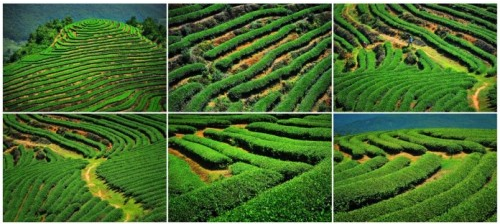 Six traditional farming systems in China, Iran and South Korea known for their unique characteristics and approaches to sustainability have been designated Globally Important Agricultural Heritage Systems (GIAHS) by the Food and Agriculture Organization of the United Nations (FAO).
Six traditional farming systems in China, Iran and South Korea known for their unique characteristics and approaches to sustainability have been designated Globally Important Agricultural Heritage Systems (GIAHS) by the Food and Agriculture Organization of the United Nations (FAO).
They include Iran’s Qanat Irrigation system, an ancient network of farms that have survived for nearly three millennia; a 22-thousand-kilometer system of black stone walls built from volcanic rock in Jeju, South Korea; and the traditional Gudeuljang Irrigated rice terraces in Cheongsando, South Korea.
Also on the list are a trio of sites in China: the unique Xinghua Duotian Agrosystem, famous for its method of water-land utilization; the historic Jasmine and Tea Culture System of Fuzhou City; and, the Jiaxian Traditional Chinese Date Gardens. The sites were officially recognized during the 28-29 April meeting of the GIAHS Scientific and Steering Committee at FAO headquarters in Rome.
These new designations bring the number of GIAHS systems to a total of 31 sites located in 14 countries in Africa, Latin America and Asia. The sites are considered models of innovation, sustainability and adaptability, delivering important benefits to the ecosystem. The GHIAS website has extensive documentation about most of these agricultural heritage systems. Picture: The Jasmine and Tea Culture System of Fuzhou City, China.
Solar Powered Grain Mill
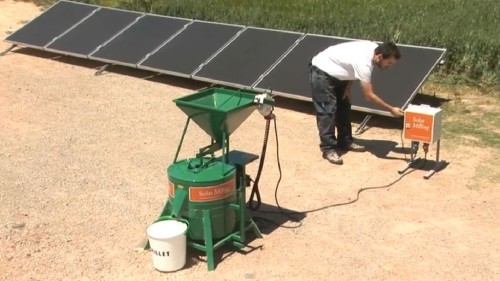
“Graining cereal crops is a basic, century old business and it will continue to be as important as ever before for centuries to come. Before the age of oil grain milling was entirely based on renewable energy. It was either done by wind energy, hydropower, animals or manpower. For the last century the traditional grain milling has been mainly replaced by electricity and fuel driven milling.”
“The Solar PV Grain Mill works to the same principle like any conventional, electrically driven mill. The mill has a very efficient 3-phase AC motor which is directly coupled to the graining system. The main invention of the system is, and that makes it unique among PV systems, that it is a “direct drive system” without the need of batteries. The Solar PV generator converts solar radiation into electricity, and the generated electricity is directly feeding the motor drive. There are no additional conversion losses, such as energy storage losses in batteries, battery maintenance or replacement costs, which are a common problem in conventional Solar PV off-grid systems.”
Read More: Solar Milling. Via Engineering for Change.
I would like to add that the direct drive system also eliminates the high energy use caused by the production of the batteries, which can make solar PV off-grid systems everything but sustainable. Therefore, storing work instead of energy — the solar mill only operates when the sun shines — is a very interesting strategy in sunny regions.
Related:
The Motorized “Solution” to Harvesting Wheat in Nepal
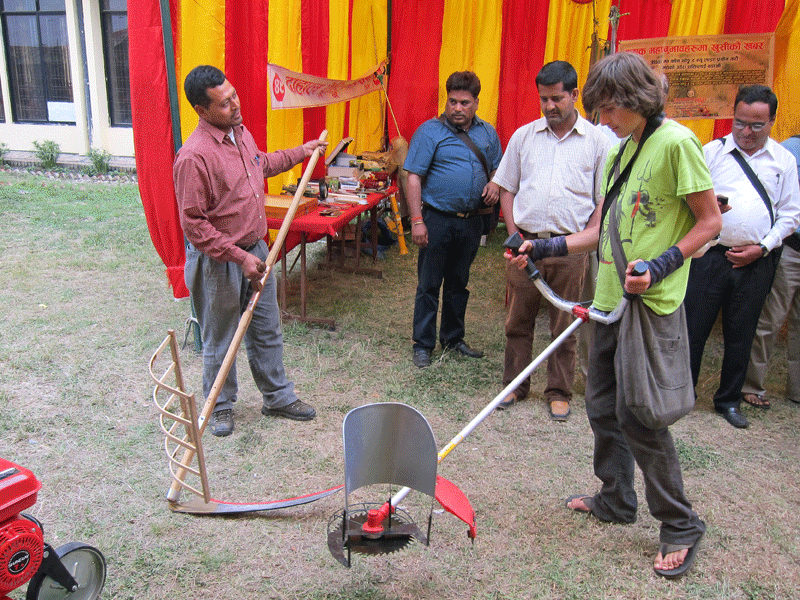 Three short videos demonstrate how an ingenious (and centuries old) adaptation of the scythe for harvesting wheat beats simple tools and high-tech alike.
Three short videos demonstrate how an ingenious (and centuries old) adaptation of the scythe for harvesting wheat beats simple tools and high-tech alike.
Steve Leppold writes us:
Here’s an example of a low-tech approach that is clearly superior to the motorized “solution”; and yet the expensive, fossil-fueled “upgrade” is being successfully marketed in developing nations like Nepal and India. One man from Canada is attempting to bring some sanity to the situation.
- The current “no-tech” method.
- The low-tech approach, being demonstrated in Nepal by Alexander Vido.
- The motorized “solution” that is being promoted by agricultural agencies.
Alexander Vido and his teenage son brought donated equipment to Nepal in 2012, and made this short video of their volunteer efforts. The project is described at Scythe Project in Nepal.
Thanks, Steve. The project’s website has lots of technical information. Previously: The Religion of Complexity.


